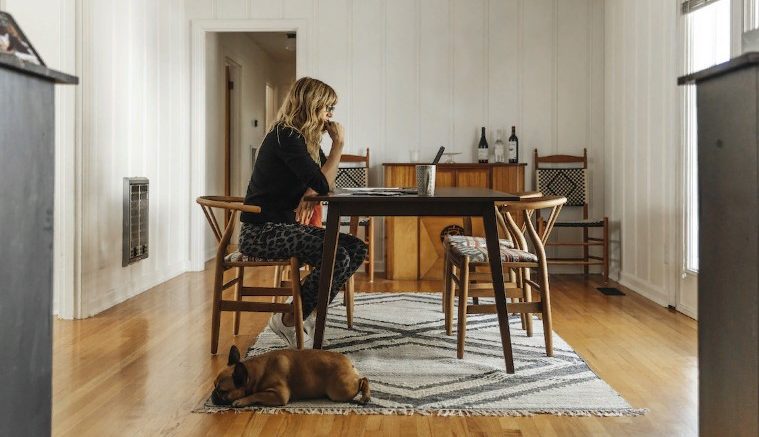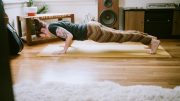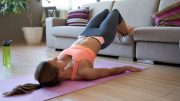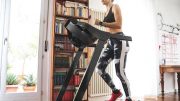I’ve been doing this simple glute exercise while I’m at work, and without even realizing it, I’ve seen a big difference.
Even though I consistently exercise, my lack of glute power plainly reveals how many hours a day I spend sitting on my buttocks.
My physical therapist nearly always links whatever injury I’ve had—whether it’s in my hips, thighs, or lower back—to some kind of compensatory mechanism my body is employing to compensate for my weak backside. (It’s the cost of “desklife.”)
My tailbone started acting up so terribly last month that I could scarcely walk to the kitchen and back. My doctor said it was sacroiliac joint pain, which was made worse by the fact that my weak glutes made me unstable.
I immediately went to YouTube in search of some routines that might be of assistance. Trainer Ali Handley demonstrates a seated glute workout with a tension band looped around the calves in a BodyLove Pilates video: Slowly lift and lower your heels as you press your legs outward into the band, keeping the same amount of resistance.
Following Handley’s instructions for only eight exercises, I felt my gluteus medius on the outside of my hips fire up—and stay engaged even after I finished. I immediately went for a stroll with my dog around the block, and I could still feel the muscles firing (aka lightly burning with each step). My pelvis was more stable and less painful after that activation than it had been in over a week.
So I promised myself that I would do the exercise every day. As a result, I did it twice in succession and soon forgot about it.
I knew I had to make it a habit in some way. Because this is such a simple exercise that requires little concentration, I decided to incorporate it into my morning routine: Now, when I first sit down to work, I simply wrap a resistance band around my calves for the first half hour (or until I get up to get more coffee) and do a few heel lifts every now and then while checking email and Slack. I keep the band near my laptop as a reminder to put it on, and because it doesn’t take any more time, I really do it.
This might be the simplest workout I’ve ever done. One of the most effective, too. I could feel those difficult-to-target muscles getting stronger and my pelvis staying steadier when I walk or run after just a week of consistent practice, which has meant I’ve had almost no SI joint pain.
I know what you’re thinking: it sounds too good to be true. Is it possible that such noticeable outcomes are all in my head? I asked Cecily McCullough, a NASM-certified trainer who works with clients at the functional fitness-based studio P.volve, if this kind of habit might be actually useful, or if I’m just imagining it and having a placebo effect.
She says working the glutes while sitting might be a good method to isolate and target the right muscles. “You have more support for the pelvis and spine when you’re seated,” she explains, “so you’re not working against other elements like when you’re standing or even lying on the floor, working against gravity.”
“There’s also a minimal range of motion with seated activity, especially when the band provides resistance. ” It’s easy to maintain perfect form even when I’m not paying attention to rising and lowering my heels because the movement is so small and controlled.
Physical therapist Theresa Marko, DPT, a representative for the American Physical Therapy Association and proprietor of Marko Physical Therapy in New York City, suggests that my go-to exercise, pressing my glutes tight and releasing them while sitting, would get into the glutes more effectively. Or, as she puts it, getting up and moving around. “Small, frequent breaks can go a long way toward preventing difficulties,” she explains.
However, as the adage goes, the best workout is the one you’ll perform. Although there are many other strategies to strengthen my glutes, I’ll stick with the one that I barely have to think about for the time being.





